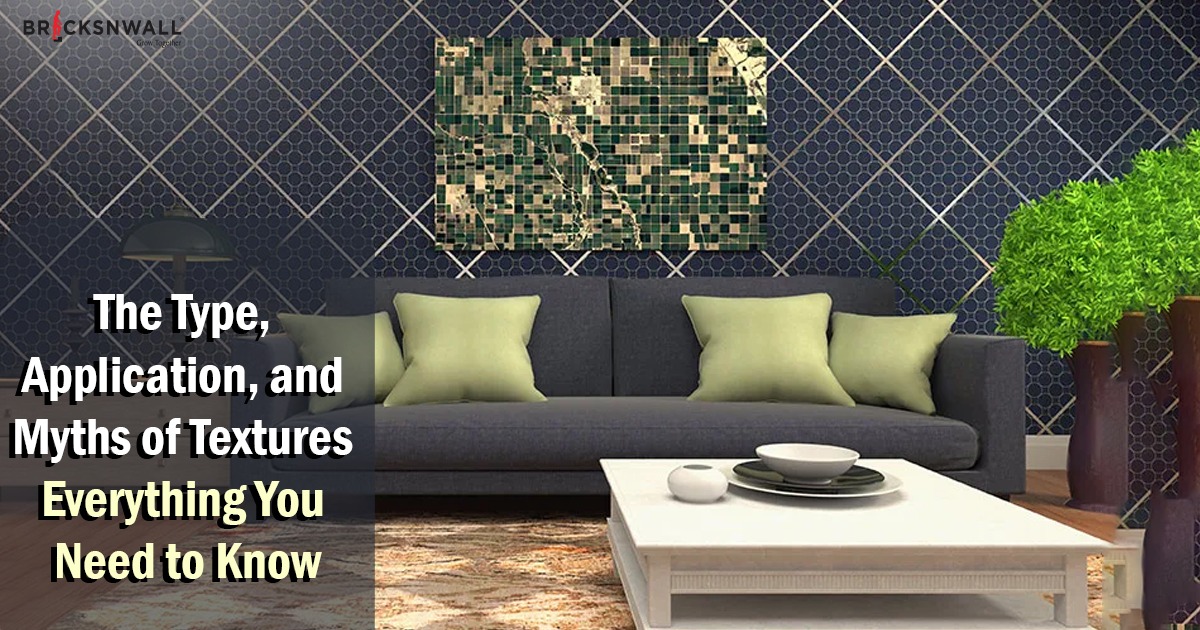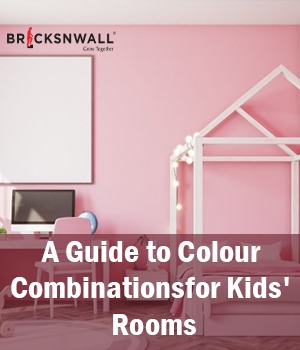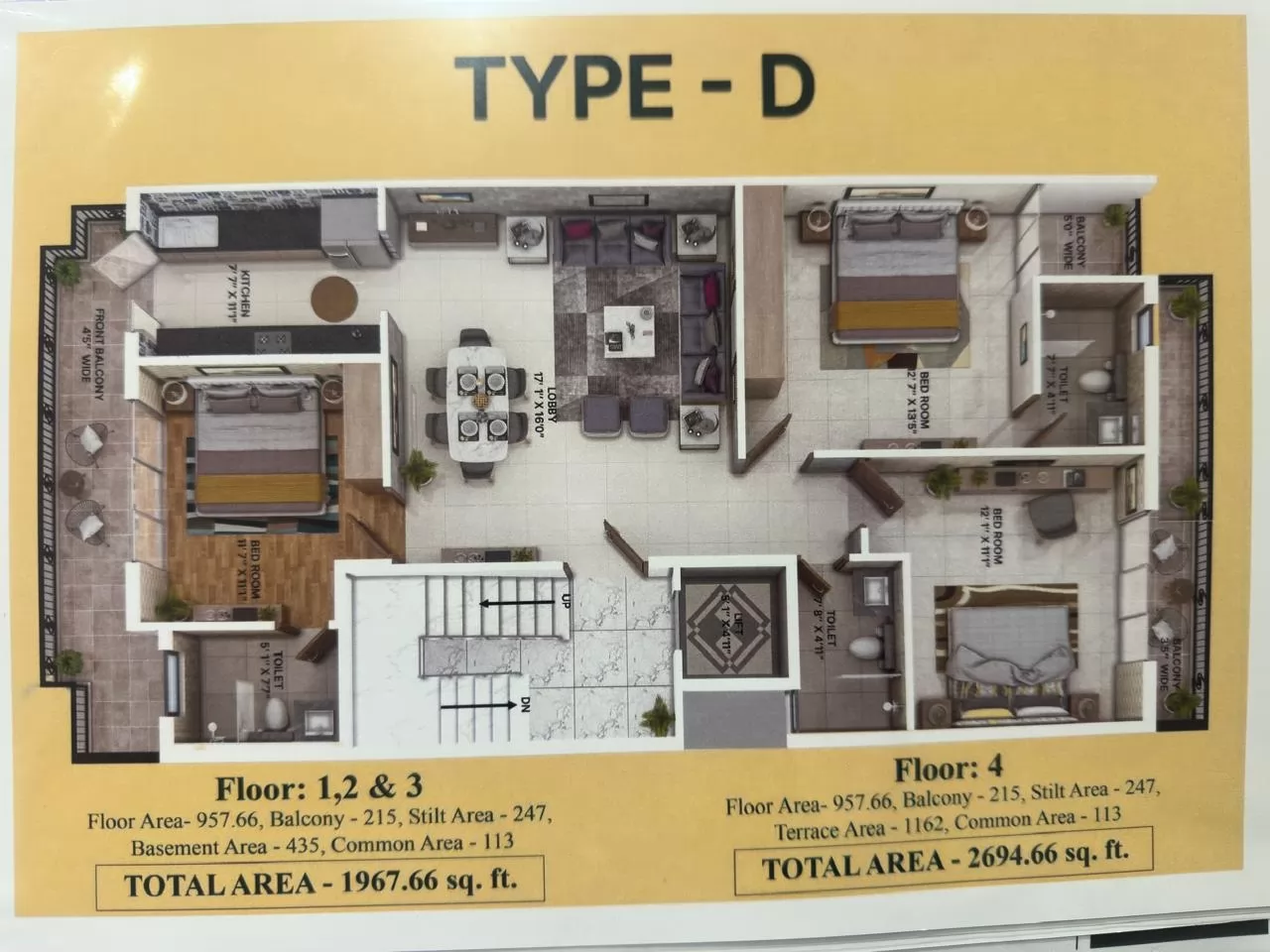The Type, Application, and Myths of Textures: Everything You Need to Know
Bricksnwall Trusted Experts

There's more to designing a comfortable and
inviting environment than just choosing the proper furniture and hues. The
interior wall texture is a feature in interior design that is frequently
overlooked. Interior wall texture is a key component of producing a calming and
aesthetically pleasing atmosphere in interior design. It can be incorporated
into spaces through a variety of techniques, including materials, fabrics,
finishes, and patterns.
However, how can it change your house? This article will explain textures in interior design and demonstrate how to apply them to create visually appealing living areas. This tutorial will provide you with insightful information whether you're a homeowner trying to add some personality to your house or a design enthusiast interested in learning more about the subtle elements of texture in interior design.
1. First, what does texture mean?
There are many factors to take into account while
designing a home's interiors, and each is essential in determining the final appearance
and ambiance. Of these basic components, textures stand out as being very
important. However, what exactly is texture?
The properties of surfaces or materials that may be
felt or seen are known as textures. These features cover a wide range of attributes,
such as surface roughness or smoothness, the existence of patterns or motifs,
and the type of finish used. The textures in a room are what you see, feel, and
touch as you walk in.
Let's examine a few different kinds of texture
paints to assist you in choosing the best one.
2. Various Texture Paint Types for Interior Use in Your Home
There are many different types of wall texture in interior design, each having special qualities and uses. It's important to comprehend the various wall texture paint options available to you before delving into the practical aspects of incorporating textures into your home. Here's a brief rundown of several popular wall texture paint varieties:
Paint with Smooth Wall Texture:
If you like a modern, clean aesthetic, smooth texture is great for interior design. These textures are appropriate for modern and minimalist decor since they offer your walls a polished and elegant appearance.
Sand Wall Texture Paint:
Sand-textured paint is a wonderful choice if you prefer a little coarser texture. Fine sand particles are used in the formulation of sand texture paint to create a rough, granular texture that evokes a beach or coastal atmosphere. When a tactile, textured look is required, this kind of texture paint is frequently employed in places.
Paint for Knockdown Wall Textures:
As the name implies, these textures are created by
painting a wet combination of joint compounds on the walls and then using a
trowel or knife to knock it down. This results in a flattened surface with a
textured pattern. In interior design, knockdown textures are flexible and can
be tweaked to provide varying degrees of texture.
Paint with Popcorn Wall Texture:
In interior design, popcorn textures—also referred to as acoustic ceiling textures—add a distinctive element to some areas. Popcorn textures give your walls a nostalgic charm with their tiny raised bumps that resemble popcorn.
Orange Peel Wall Texture Paint:
Joint compounds are applied to the walls to create
orange peel textures, which are similar to knockdown textures in interior
design. But rather than being pressed into shape, the compound is allowed to
dry, giving it the appearance of an orange peel on the outside. Your walls will
seem subtle and elegant with this texture added.
3. How Are Textured Paints Applied?
After deciding on the kind of textured paint you
want for your walls, it's time to learn how to apply and utilise it. The
following is a step-by-step guide to applying textured paint:
Prepare the Surface:
Make sure the surface is dust- and
debris-free before applying texture paint. Fix any holes or cracks in the
walls, then give them time to dry fully.
Prime the Walls:
To produce a level and smooth surface for the
texture paint, apply a coat of primer to the walls. Additionally, this will
improve the paint's adhesion to the surface.
To properly mix the texture paint
According to the directions provided on the
packaging. It's important to follow the manufacturer's instructions as
different textures could call for different mixing methods.
Apply the Texture Paint:
Paint the walls using a brush, roller, or
trowel after applying the texture paint. For even coverage, begin at the top
and work your way down. It could take several coats to achieve the desired
texture.
Let Dry:
As directed by the manufacturer, give the
textured paint enough time to dry. During this time, try not to touch or damage
the painted surface.
Final Touches:
After the textured paint has completely dried, you can improve the appearance by using a topcoat or sealer. This will provide a polished surface and shield the paint.
4. Myths About Textured Paint on Walls
Textured paint is a popular option for enhancing
wall visual interest and producing distinctive interiors. But certain
widespread misconceptions about textured painted walls in interior design could
sway your choice. To have a better knowledge, let's dispel a couple of these
myths:
Myth: You may only use
textured paint in classic or rustic decor
Reality: Textured paint on
walls can improve the appearance of classic or rustic interiors, but it's not
just for them. Because textured paint is available in a variety of patterns and
finishes, it may be used with a variety of design aesthetics, including modern
and contemporary.
Myth: It's difficult
to clean and preserve textured paint.
Truth: Maintaining and
cleaning walls with textured paint is not intrinsically more challenging than
doing so with smooth paint finishes. It usually suffices to clean on a regular
basis with mild soap and water or a light household cleaner. It is crucial to
refrain from using abrasive cleaning instruments since they may cause harm to
the texture.
Myth: A space appears
smaller when painted with texture.
Reality: The impression of a room's size is influenced by a number of variables, including the colour, pattern, and scale of the textured paint. In certain instances, textured paint on walls can add visual appeal and give a room a homely, intimate feel. Nonetheless, a feeling of openness can be preserved by utilising lighter colours and textures with smaller scales.
Myth: Only walls
should be painted with textured paint.
In actuality, textured paint is not just for walls; it can also be used on furniture, ceilings, and even outside surfaces. This adaptability lets you choose imaginative and unified design elements for your entire house.
5. How are wall textures kept up to date?
In order to preserve different wall textures'
structural integrity and visual appeal, maintenance is necessary. Here are some
tips for maintaining various types of wall textures:
Texture of Smooth Walls:
Maintaining textures on smooth walls is not
that difficult. Dust or use a moist cloth to wipe the walls occasionally to get
rid of stains and dirt. Spot cleaning can be done with water and a light
detergent for any stains or scuffs. Touch-up painting as a sort of periodic
wall texture repair helps maintain the walls' original appearance.
Sandwall Texture:
Because of their grainy finish, sandwall
textures need to be handled carefully. Abrasive cleaning agents should be
avoided since they may harm the texture. Using a soft brush or a vacuum with a
brush attachment, dust the walls. Use a soft cloth and a moderate, non-abrasive
detergent to remove stains.
Knockdown Texture:
This type of texture requires less upkeep.
Generally, regular use of a soft brush attachment when vacuuming or dusting is
adequate. If there are scuffs or stains, spot clean using a soft cloth and a
moderate cleaning solution (such as a solution made of water and mild
detergent).
Orange Peel Texture:
It's quite easy to keep orange peel texture intact. To keep the walls clean, use a gentle brush attachment while dusting or vacuuming. To remove stains, use water and a mild detergent on a soft cloth or sponge; stay away from abrasive items as they may cause damage to the texture.
Popcorn Texture:
Because popcorn ceiling textures are permeable,
they might be more difficult to clean. Use a specialised ceiling cleaning
equipment or attach a soft brush attachment to your vacuum to clean the
ceiling. To prevent harming the texture, it is advisable to seek professional
advice when dealing with stains.
Recall that gentleness is the key to preserving
these textures. Steer clear of items that are too abrasive, strong cleaning
chemicals, or excessive dampness since these could damage the texture's
integrity.
- Texture might be rough, bumpy, slick, scratchy, smooth, silky, soft, or prickly; the possibilities are unlimited. In this section, you'll look at the actual texture of works of art and learn how artists create the illusion of texture with paint, wood, stone, and clay.
- Texture refers to the physical feel of anything, which might be smooth, rough, fuzzy, slimy, or somewhere in the between. Sandpaper is exceedingly rough, with a gritty feel. Others, such as linoleum, have a smooth surface. Texture refers to how a thing feels and its elements.
- Texturing a wall requires only a paint roller, a paintbrush and a plasterboard knife. Texture a wall with plasterboard compound, water, primer and paint. Texturing a wall with a roller is like painting a wall with a roller.
- One of the primary purposes of textures in interior design is to add depth to a room. Smooth and shiny surfaces, such as polished marble or glass, may make a room look sleek and modern.







